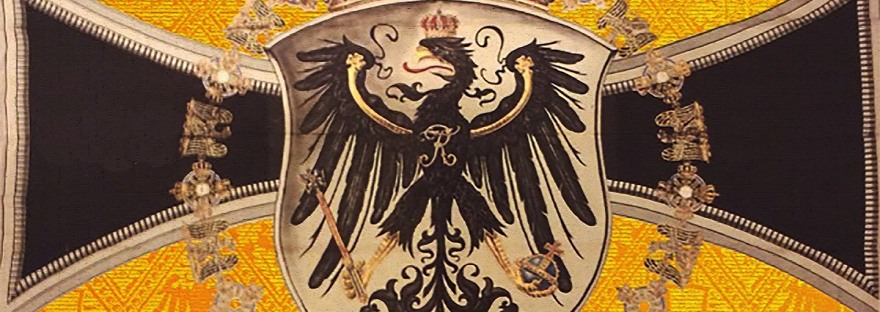The Germans that colonized and built cities in the lands bordering the Baltic Sea were referred to as Baltic Germans. They ruled regions named Prussia, Kurland, Memel, and Livonia which are now known as the Baltic States: Latvia, Estonia, and northern parts of Lithuania and Poland. German culture thrived in these regions for 700 years.… Continue reading Baltic Germans were the legacy of the 300 year old Teutonic State that ended in 1525
Tag: East Prussia
There once existed a German state, governed by Warrior Monks, that ruled over all the lands along the Baltic Sea for 300 years
Prussia circa 1250, Teutonic Knights Charge during winter, their favorite season in the Northern Crusades. Much of German history is not well known ...for example, there were successful Crusades conducted in northern Europe for hundreds of years and the largest castle ever built in Europe was a German crusader castle, the Marienburg. There once existed… Continue reading There once existed a German state, governed by Warrior Monks, that ruled over all the lands along the Baltic Sea for 300 years
Travel routes to the popular German seaside resort at Cranz in East Prussia in 1930
"Ostpreussen...Reisewege Nach Cranz an die Ostsee"....Vintage travel advertising for routes to the popular German Baltic Sea resort at Cranz. This 1930's advertising poster shows the various routes to the seaside resort at Cranz... by train, car, sea or by air... with emphasis on routes from Berlin and Breslau. Of particular interest to historians is how… Continue reading Travel routes to the popular German seaside resort at Cranz in East Prussia in 1930
My thoughts regarding genealogy and family names in East Prussia
Here are some of my thoughts regarding genealogy and family names in northeast East Prussia (Ostpreussen) and Memel. Many people there had German ancestors who emigrated from Saltzburg and a variety of other German cities and states. But many of these families had a common denominator... the “eit” at the end of their Surnames. How… Continue reading My thoughts regarding genealogy and family names in East Prussia
If the East Prussian moose antler symbol could speak it would say: Germany, forget me not!
My message with this image is that today's Germans should remember and honor the history of East Prussia. This relatively small part of old Germany, the easternmost part of Germany once mentioned in the national anthem, played an oversized role in history. But the descendants of these East Prussians are now dispersed all over the… Continue reading If the East Prussian moose antler symbol could speak it would say: Germany, forget me not!
Berlin was once located in the center of Germany…now the German capital is oddly situated right next to the eastern border.
Berlin in 1939 Current map of Germany with Berlin at eastern border On a map of the German Empire in 1871, you can see that Berlin was once located in the center of Germany. The location of Berlin within German borders is the most glaring difference between old and modern Germany. When you look at… Continue reading Berlin was once located in the center of Germany…now the German capital is oddly situated right next to the eastern border.
They trekked through innumerable northern German towns and cities wearing their unfamiliar Austrian style clothing
Imagine a long stream of people walking day after day from Saltzburg to Berlin, creating a sensation as they trekked through innumerable northern German towns and cities wearing their unfamiliar Austrian style clothing. In 1982 a German postage stamp celebrated this event on the 250th anniversary of the arrival of Salzburg Emigrants in Prussia in… Continue reading They trekked through innumerable northern German towns and cities wearing their unfamiliar Austrian style clothing
Pictorial map of East and West Prussia
This pictorial map of East and West Prussia was produced in 1937. All of the major towns are pictorially represented on the map, notably with images of signature buildings, while the coat of arms of the towns line the edges of the printwork. The body of water on top of map is named Ostsee which… Continue reading Pictorial map of East and West Prussia
The 1871 map of Germany shows Prussia at the height of its power
This map of Germany during the Second Reich, 1871 to 1918, shows Prussia at the height of its power. Prussian states are shown in green, all other German states are shown in yellow. It is interesting to see the map in this simple two color presentation because you don't lose the forest for the trees...Prussia… Continue reading The 1871 map of Germany shows Prussia at the height of its power
This photo brings back memories of my parents who lived in Königsberg
My parents lived in Königsberg and were married there in 1940. The city was the capital of East Prussia in Germany. I remember a photo of them in 1937 in a rowboat on this large castle lagoon, the one pictured here. And stories of how they had dinner in the somewhat spooky Königsberg Castle’s Blutgericht… Continue reading This photo brings back memories of my parents who lived in Königsberg











